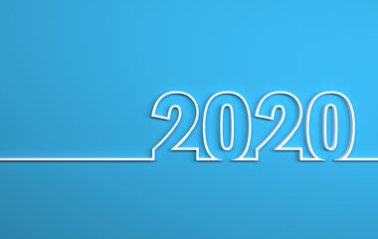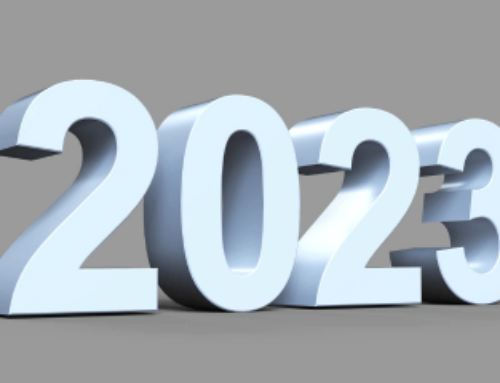By all accounts, 2020 was a tough year. The field of sleep medicine experienced numerous challenges due to the COVID-19 pandemic and lost beloved colleagues such as AASM Founding President William C. Dement, MD; AASM Past President Mark Mahowald, MD; and renowned RLS scientist Richard P. Allen, PhD. However, there were positive developments in 2020, including the widespread adoption of telemedicine, FDA approval of new treatments for sleep disorders, and the success of Virtual SLEEP 2020 — the first livestreamed (and now on-demand) meeting in the history of the Associated Professional Sleep Societies (APSS).
Here is an informal list of the top 10 trends that had a significant impact on the field of sleep medicine in 2020. You can explore each topic for an in-depth look at key headlines from the past year.
The COVID-19 pandemic, brought on by widespread transmission of the SARS-CoV-2 virus, was clearly the predominant trend in 2020. The field of sleep medicine continues to feel its impact as the year comes to an end, and its impression will be deep and lasting. The AASM developed a variety of COVID-19 resources throughout the year to equip members with important information about the pandemic:
Clinical Guidance
- Summary of CDC recommendations relevant for sleep practices during COVID-19
- Considerations for the practice of sleep medicine during COVID-19
- COVID-19: FAQs for Sleep Clinicians
- WATCH: Clinical Conversations – COVID-19
- WATCH: COVID-19 & Sleep Medicine – AASM Presidential Town Hall Forum
Coding & Reimbursement
- WATCH: COVID-19 Health Policy and Legislative Update webinar
- Sleep Medicine Codes
- Telemedicine Codes
- Coding FAQs
Journal of Clinical Sleep Medicine
- The COVID-19 pandemic: reflections for the field of sleep medicine
- AASM takes the pulse of the sleep field and responds to COVID-19
- COVID-19 Collection
Other Resources
While telemedicine has been used in the sleep field for years, the COVID-19 pandemic was the event that forced payers to recognize its value, sparking its widespread adoption in a new era of social distancing. The AASM, the American Medical Association, and other organizations developed resources to help clinicians adjust to this method of health care delivery:
- Free Telemedicine Lecture Series
- WATCH: New webcasts explore sleep telemedicine
- WATCH: Introducing Telemedicine into Your Sleep Practice
- AMA: Quick guide to telemedicine in practice
- AMA telehealth implementation playbook
- HHS: Telehealth information for providers
- Telemedicine delivery of CBT for insomnia
- AASM SleepTM
The U.S. Food and Drug Administration was busy during 2020. In addition to responding to the COVID-19 pandemic, the FDA issued numerous authorizations (and one cautionary warning) related to the field of sleep medicine. Multiple treatments for sleep disorders received FDA approval, authorization, or clearance, giving clinicians and patients new options to improve nighttime sleep and daytime alertness:
- Suvorexant: FDA approves update to info
- FDA questions safety of CPAP cleaners
- FDA clears Somryst digital CBT-I
- FDA expands age range for Inspire therapy
- Eisai launches FDA-approved insomnia drug Dayvigo
- Breakthrough status for RLS device
- FDA authorizes PAP/N95 mask
- FDA approves Xywav for narcolepsy
- FDA expands approval for Wakix
- FDA clears NightWare app for nightmares
- FDA approves Hetlioz for rare disorder
- FDA authorizes Lumin for N95 reuse
- FDA authorizes mask filter PortPatch
- FDA clears EVO oral appliance
In response to the COVID-19 pandemic, the Centers for Medicare & Medicaid Services made interim changes to increase flexibility in the provision of health care during the public health emergency. As the year came to an end, and the 2021 implementation of evaluation and management (E/M) coding changes approached, CMS published the 2021 Medicare Physician Fee Schedule final rule, which includes decreased payments for most procedures due to budget neutrality requirements:
- CMS expands coverage for telemedicine
- CMS loosens CPAP regulations
- Medicare finalizes LCDs for hypoglossal nerve stimulation for OSA
- CMS finalizes changes to the Stark Law
- CMS updates audio-only telephone assessment codes for non-physician practitioners
- Telephone evaluation and management services during the public health emergency
- Evaluation and management code changes for 2021
- WATCH: E/M code changes for 2021
- Analysis: Physician Fee Schedule final rule
- Analysis: CMS proposal on prior authorization
- Analysis: CMS interim final rules on virtual check-in services and PPE
In 2020 the AASM introduced a new strategic plan and launched important initiatives and resources to support members and advance the sleep field. Highlights from the year include:
- AASM introduces new strategic plan
- New! AASM Scoring Manual, Version 2.6
- Explore the new JCSM website
- Innovation in sleep medicine training
- CST guidance for sleep clinicians
- New payer policy scorecards
- Talking Sleep: New AASM podcast!
- AASM student sleep resolution introduced
- New Congressional Sleep Health Caucus
- Hypopnea Scoring Rule Task Force update
- AASM waives facility membership dues for 2021
In 2020 the AASM published a new clinical practice guideline for the treatment of insomnia, a summit report, and several position statements on hot topics:
- Behavioral and psychological treatments for chronic insomnia disorder in adults: Clinical practice guideline
- Behavioral and psychological treatments for chronic insomnia disorder in adults: systematic review, meta-analysis and GRADE assessment
- Strategies to improve patient care for obstructive sleep apnea: Report
- Daylight saving time: Position statement
- Artificial intelligence in sleep medicine: Position statement
- Sleep, fatigue and burnout among physicians: Position statement
In 2020 we saw the continued development of technological advancements in sleep medicine. Innovations in artificial intelligence, wearable devices, and biosensors abounded. These are just some of the devices and innovations that caught our attention in 2020:
- Sleep gadgets on display at CES 2020
- Withings ScanWatch to detect OSA
- Wearable trains brain to sleep better
- Wearable patch, deep learning detect OSA
- A novel sleep stage scoring system
- Wearable improves perceived sleep quality
- Novel sensor to quantify sleep posture
- Radar, machine learning stage sleep
- 3D face photos as OSA screening tool
- New EEG tattoo electrodes
- 3D-scanning technology to personalize CPAP mask fittings
- Deep learning to improve actigraphy scoring
- AI algorithm scores K-complexes
- Zeto develops dry electrode EEG headset
- Study compares Dreem headband to PSG
- Cove: New wearable for stress, sleep
- Deep learning for auto sleep staging
- Soft nanotechnology for brain signals
- New flexible robotic surgery system
- New eye mask with fabric sensors
- MIT: Researchers develop wireless device to monitor sleep position
- Wearable sensors printed on skin
- AcuPebble device cleared in Europe
- Sleep detection with tracheal sounds
- Flexible, nanofiber sensor innovation
- Predictive analytics model can improve inpatient sleep
In 2020 some of the world’s biggest and most influential tech companies — Amazon, Apple, Fitbit, and Google — increased their investments in the health and medicine space, with each company taking significant steps to focus on sleep health:
- Epic Systems to pursue integrations with Amazon, Microsoft instead of Google
- Apple, Johnson & Johnson partner to conduct largest Afib randomized controlled trial
- Apple seeks patent for sleep tracking bedding
- Google: New bedtime tools for Android phones and YouTube app
- Fitbit: New Fitbit Flow, a low-cost emergency ventilator
- Apple Watch introduces sleep tracking
- Amazon releases new Halo wearable
- Amazon launches new Amazon Pharmacy
- New Apple Watch and iPad features enable wellness, fitness, and creativity
- The long wait for Google’s $2.1 billion Fitbit deal
Current events sparked national outrage and ongoing discussions about health disparities and systemic racism in 2020. AASM leaders, AASM members, the National Institutes of Health, and other medical organizations identified the need to address these problems in health care and within the sleep field:
- AASM condemns racism and discrimination
- WATCH: Social determinants of sleep health
- WATCH: Diversity and inclusion in GME
- LISTEN: Understanding sleep health disparities
- Sleep health disparities workshop report
- Disparities in sleep health and potential intervention models: a focused review
- NIH FOA for research projects on mechanisms and consequences of sleep disparities in U.S.
- NIH panel recommends methods to reduce health disparities
- Report examines integration of social care in health care delivery
In 2020 some of the largest pharmacies in the U.S. — CVS, Walgreens, and Walmart — continued to build the infrastructure needed to expand their role in health care delivery and potentially provide care for patients with sleep disorders:
- CVS Health aims to make sleep care more accessible
- Walgreens attempts to connect customers to sleep solutions
- Walgreens and VillageMD to open 500 to 700 full-service doctor offices
- Walgreens to open 40 new primary care clinics by the end of next summer
- Walmart takes on health care delivery
- Walmart launches Walmart Insurance Services, partners with pharmacy benefit manager
- One year in, Walmart Health is delivering affordable healthcare – and expanding
By Thomas Heffron, AASM senior director









